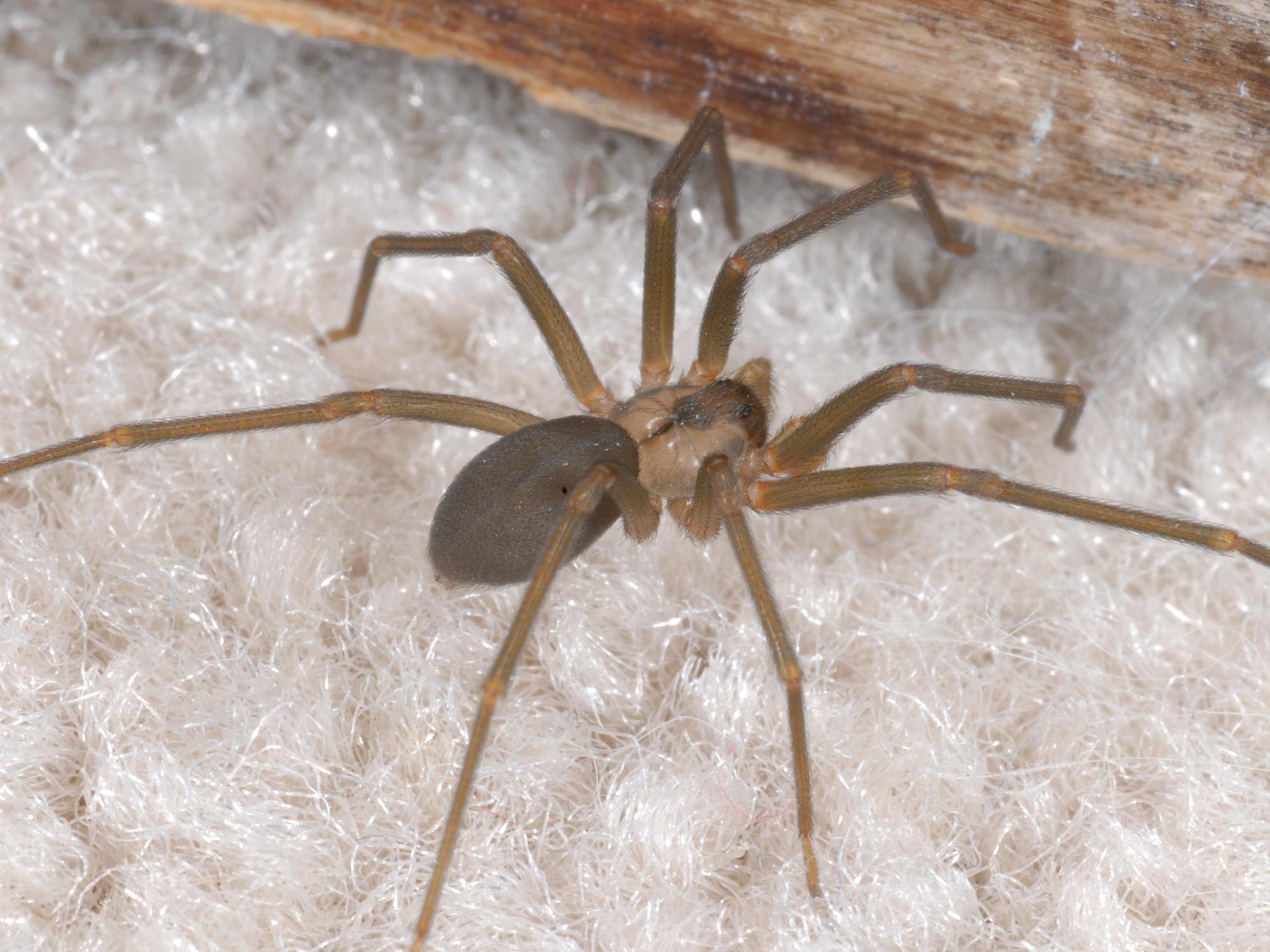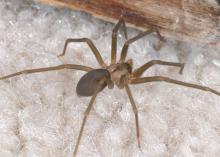Information Possibly Outdated
The information presented on this page was originally released on June 10, 2016. It may not be outdated, but please search our site for more current information. If you plan to quote or reference this information in a publication, please check with the Extension specialist or author before proceeding.
Avoid close encounters with venomous spiders
STARKVILLE, Miss. -- Warmer days motivate many people to tackle cluttered closets, disorganized garages and idle storage buildings. But before pulling out neglected boxes of junk, consider who -- or what -- might have taken up residence in the dark, undisturbed piles.
Brown recluse spiders like to live in warm, dry, undisturbed places in Southern and Midwestern states. They are as secretive and reclusive as their name implies. Some spiders build webs out in the open to catch flying insects, but brown recluses’ webs are not the classic, orderly web shape seen in Halloween decorations. Instead, recluses build a messy shelter of web inside a hidden spot.
In the wild, brown recluses prefer to make their homes under bark or fallen trees, which give them shelter from harsh weather. In homes, recluses are commonly found in cardboard boxes, under the sheets of guest beds, in the corners of garages and sheds, and inside old shoes, gloves and the like. They are also found in bathtubs or around toilets.
Sharing your home with the occasional daddy longlegs is not a big deal, but brown recluses are venomous and potentially harmful to people.
Brown recluses are medium-sized spiders, usually about the size of a nickel. Occasionally, they’ll get as big around as a quarter. Recluses are generally light brown, but they can be almost white to dark brown. Their backs display a dark, fiddle-shaped pattern, oriented so the “neck” of the fiddle is pointed away from the head. Sometimes, other kinds of spiders are mistaken for brown recluses. For example, wolf spiders and some other arachnids have stripes and other shapes on their backs. The legs of brown recluses taper down to small “feet.” There are no stripes, spots, bands or spines on their legs.
Another unique feature on brown recluses is the number of eyes. Most spiders have eight eyes, but the brown recluse has only six. These six eyes are arranged in pairs that form a triangle pattern on the recluse’s head.
The concern about brown recluses comes from the toxin they can inject when they bite. Their venom can cause the death of tissue (necrosis) around the bite location. Fortunately, most brown recluse bites heal without special medical attention. If you suspect a wound could be caused by a bite from a brown recluse, seek medical attention immediately to help rule out similar issues, such as a staph infection or MRSA, the common reference for methicillin-resistant Staphylococcus aureus.
Bites from brown recluses are often painless, making it more difficult to track down the potential culprit. If you think you have been bitten by a recluse, monitor the site for complications that may develop. As with other insect bites or stings, a blister or reddened spot at the bite site is the first symptom. Mild to more intense pain with itching may follow in two to eight hours, similar to that caused by a wasp sting.
Simple first aid practices such as rest, pain-relief medications and ice to reduce swelling will help healing. If an open sore or ulcer begins to develop about a week later, seek professional medical attention immediately.
To avoid the potential for brown recluse bites, spring clean cautiously. Wear gloves to protect your hands. Open boxes and other little-used items with care, taking time to look under flaps for any stowaways. Shake out shoes, boots and gloves that have not been worn in a year, and wash bedding before putting your houseguests into that little-used bedroom. Simple precautions such as these can help prevent an unplanned trip to the doctor’s office this spring.

Editor’s Note: Extension Outdoors is a column authored by several different experts in the Mississippi State University Extension Service.




